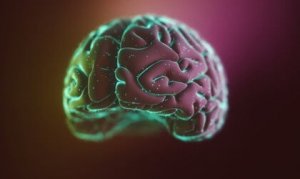The Neocortex: Its Structure and Functions


Written and verified by the psychologist Valeria Sabater
Everything that we are, feel, and, more importantly, what we can become, is stored in our brain. Much of our evolutionary success is thanks to the neocortex, also called the isocortex. It’s a newly-discovered and extensive region that makes sophisticated processes such as communication, writing, sociability, creativity, and decision-making all possible.
David Eagleman, a writer and famous neuroscientist at Stanford University, points out that each brain is unique, just like snowflakes. No two are the same; they reflect the results of our experiences, behavior, and actions. However, at a structural level, we’re all the result of this exceptional phylogenetic development. The neocortex undoubtedly stands out as one of our greatest “successes”.
It’s made up of a large number of grooves, six layers with two millimeters of thickness; it contains about 30,000 million neurons. It’s a neuronal layer that especially covers the frontal lobes, whose development and specialization stands out in primates and, of course, in human beings. Knowing more information about this area of our brain will allow us to get to know ourselves much better. Let’s find out more.
“Neuroscience is by far the most exciting branch of science because the brain is the most fascinating object in the universe. Every human brain is different – the brain makes each human unique and defines who he or she is.”.
-Stanley B. Prusiner (Nobel Prize in Medicine, 1997) –
The neocortex: The “newest” and most extensive part of our brain
The neocortex doesn’t have a very noticeable thickness. However, we should take into account that this structure is perfectly “folded” just below the skull. Hence the classic image of a brain full of grooves and convolutions. If we could extend this entire area, it would be nearly six feet in length.
Likewise, the neocortex is also divided into the two cerebral hemispheres, thus favoring greater neuronal specialization. We should also note that the human being is the only mammal to have such a high concentration of specialized neurons in such a small space.
On the other hand, the way in which the different layers of the neocortex are connected has been, until recently, a mystery. However, as revealed to us in a study published in the journal Frontiers in Psychology, they do so in the form of a “column”. According to scientists, they form patterns of laminar and columnar connectivity.
The human neocortex also accounts for 76 percent of our gray matter.
It’s also interesting to note that we don’t find this structure in birds or reptiles. Despite this, however, scientists have discovered that many birds (such as crows) are incredibly intelligent, despite not having a defined neocortex.

The functions of the neocortex
If our neocortex suffers some sort of trauma, the consequences can be very serious. If we suffer an accident to our head as a result of not wearing a helmet when riding a bike or motorcycle, we can easily lose the ability to communicate, among other things.
All our cognitive processes, as well as spatial awareness, being able to recognize faces, or even access our self-consciousness or the sense of who we are, are integrated into this very distinctive area of human beings and primates.
More about the functions of the neocortex
Executive functions
In this newly-discovered and specialized layer of our brain, we’re able to carry out tasks such as problem-solving, decision-making, reflection, concentration, self-control, social behavior regulation, and many others. These are high-level tasks of great complexity that also influence our learning capacity and many other processes.
Language and writing
Language, as we know, is a capacity that places humans above all other species. (Although it’s true that some birds can also speak, what they show is mere imitation and not a genuine sense of communication).
The reading and writing process are also due to a series of complex processes that occur in the neocortex. To be able to associate written and oral symbols with meaning is a highly sophisticated and complex process.

Sensory perception
Understanding and reacting to what we see and feel is another capacity that the neocortex regulates and aids.
Motor automatisms
What makes us write, drive, play an instrument, or even walk upright automatically, without having to think about it? For these activities, we use more neurological structures such as the cerebellum. That being said, all these processes are possible thanks to the neocortex.
Learning and innovation skills
The ability to learn and transform what we learn – to create new things – is undoubtedly human beings’ most distinctive process. We don’t just limit ourselves to transmitting information and acquiring new skills. The fact is that we’re also able to transform reality and increase our knowledge. We do this through observation, analysis, reflection, trial and error tests, and innovation.
This ability to learn and create has also allowed us to move forward as a species. Likewise, as Juan Luis Arsuaga points out in his book The Chosen Species, the development of the neocortex arose as a result of our social interactions. Moreover, we know that the size of this structure had a direct relationship with the number of individuals that formed a social group.
There’s something we just can’t ignore: we keep changing. In 1999, neuroscientists discovered the great neuroplasticity of the neocortex. This means that all human beings continue to create neural connections throughout their whole lives.
Our experiences and behavior can help us to create a stronger, more skillful, and more resistant neocortex.
All cited sources were thoroughly reviewed by our team to ensure their quality, reliability, currency, and validity. The bibliography of this article was considered reliable and of academic or scientific accuracy.
Arsuaga. J. L (1998). La especie elegida. Temas de Hoy.
Kandel, E.R., Schwartz, J.H. & Jessell, T.M. (2001). Principios de neurociencia. Madrid: McGraw Hill
Morgan, A.J. (2001). El cerebro en evolución. Editorial Ariel neurociencia.
This text is provided for informational purposes only and does not replace consultation with a professional. If in doubt, consult your specialist.








